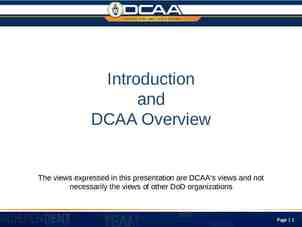interventioncentral Implementing The RTI Model: Next Steps for Schools
22 Slides292.50 KB

www.interventioncentral.org Implementing The RTI Model: Next Steps for Schools Jim Wright

www.interventioncentral.org Implementing RTI: Next Steps 1. Adopt evidence-based intervention strategies. Academic interventions will have a higher chance of success if they are based on sound empirical research. Jim Wright

www.interventioncentral.org Implementing RTI: Next Steps Web resources for evidence-based intervention strategies Big Ideas in Beginning Reading (U of Oregon): reading.uoregon.edu What Works Clearinghouse (US Dept of Education): www.w-w-c.org Intervention Central: www.interventioncentral.org Jim Wright

www.interventioncentral.org Reading Interventions Jim Wright

www.interventioncentral.org Savvy Teacher’s Guide: Reading Interventions That Work (Wright, 2000) Jim Wright

www.interventioncentral.org Interventions for Increasing Reading Fluency Assisted Reading Practice Listening Passage Preview (‘Listening While Reading’) Paired Reading Repeated Reading Jim Wright

www.interventioncentral.org Interventions for Improving Comprehension ‘Click or Clunk?’ Self-Check Keywords: A Memorization Strategy Main Idea Maps Mental Imagery: Improving Text Recall Oral Recitation Lesson Prior Knowledge: Activating the ‘Known’ Question-Generation Reciprocal Teaching: A Reading Comprehension Package Story Map Text Lookback Jim Wright

www.interventioncentral.org Implementing RTI: Next Steps 2. Train staff to collect frequent progress-monitoring data. Curriculum-based measurement (CBM) can be used to assess a student’s accuracy and speed in basic-skill areas such as reading fluency, math computation, writing, spelling, and pre-literacy skills. Teachers also can measure the behavior of struggling learners on a daily basis by using classroom behavior report cards: simple, convenient rating forms to track a child’s work completion, attention to task, compliance with teacher directions, and other behaviors that influence learning. Jim Wright

www.interventioncentral.org Implementing RTI: Next Steps Web resources for progress-monitoring CBM Warehouse: www.interventioncentral.org/htmdocs/interventi ons/cbmwarehouse.shtml The Behavior Reporter (Behavior Report Card Generator): http://www.jimwrightonline.com/php/ tbrc/tbrc.php Jim Wright

www.interventioncentral.org Implementing RTI: Next Steps 3. Develop building-level intervention programs to address common academic concerns. When faced with large numbers of students with shared academic concerns (e.g., reading fluency), schools can create a building-level intervention program to meet this need. For example, older children could tutor younger students by using simple, research-based techniques to boost their tutees’ reading fluency. Jim Wright

www.interventioncentral.org Implementing RTI: Next Steps Web resource for a building-level intervention program: peer-tutoring/reading fluency Kids as Reading Helpers Peer Tutoring Manual: www.interventioncentral.org/htmdocs/ interventions/rdngfluency/prtutor.shtml Jim Wright

www.interventioncentral.org Kids as Reading Helpers: A Peer Tutor Training Manual Jim Wright

www.interventioncentral.org Implementing RTI: Next Steps 4. Establish a building intervention team. Made up of teachers and support staff, the intervention team can help referring teachers design feasible strategies for struggling students. Intervention teams also foster a sense of collegiality and mutual support among educators, promote the use of evidence-based interventions, and assist busy teachers in carrying out intervention plans. Jim Wright

www.interventioncentral.org Strategies to Minimize Teacher Resistance to Classroom Interventions (Kovaleski, 2003) Collaborative team problem-solving process in which the referring teacher is an active and equal participant Peer-coaching’ format for introducing intervention to classroom--with modeling of intervention for teacher Ongoing consultation with referring teacher to ‘embed’ intervention into classroom routine Jim Wright

www.interventioncentral.org Implementing RTI: Next Steps Web resources on building intervention teams Screening to Enhance Educational Performance: STEEP (Joe Witt, Ph.D.): http://www.joewitt.org/steep.htm Instructional Consultation Teams (Sylvia Rosenfield, Ph.D.) http://www.icteams.umd.edu/ School-Based Intervention Teams (Syracuse City Schools): http://www.interventioncentral.org/htmdocs/ interventions/sbit.shtml Jim Wright

www.interventioncentral.org School-Based Intervention Teams: QuickGuide Jim Wright

www.interventioncentral.org SBIT QuickGuide Jim Wright

www.interventioncentral.org SBIT Consultative Process Step 1: Assess Teacher Concerns Step 2: Inventory Student Strengths and Talents Step 3: Select Target Teacher Concerns Step 4: Set Goals Step 5: Design an Intervention Plan Step 6: Plan How to Share Information with the Student’s Parent(s) Step 7: Review the Intervention and Monitoring Plans Jim Wright

www.interventioncentral.org Implementing RTI: Next Steps 5. Align Current Intervention & Assessment Efforts With 3-Tier Model. Many schools already have intervention & assessment initiatives in place. Mapping out those initiatives, standardizing their content, and tying them to the appropriate level of the 3-tier intervention framework can help schools to better coordinate intervention programming. Jim Wright

www.interventioncentral.org RTI Response By Levels: Examples Tier I Homework Club Reading Lab PBIS: Primary Math Lab Tier II Tier III Intervention Team Special Education Services Jim Wright PBIS: Secondary PBIS: Tertiary

www.interventioncentral.org References Fuchs, D., Mock, D., Morgan, P.L., & Young, C.L. (2003). Responsiveness-to-Intervention: Definitions, evidence, and implications for the learning disability construct. Learning Disabilities Research & Practice, 18(3), 157-171. Fuchs, L. (2003). Assessing intervention responsiveness: Conceptual and technical issues. Learning Disabilities Research & Practice, 18(3), 172-186. Kovaleski, J. F. (2003). The three-tier model of identifying learning disabilities: Critical program features and system issues. Paper presented at the National Research Center on Learning Disabilities Responsiveness-to-Intervention Symposium, Kansas City, MO. Vaughn, S., & Fuchs, L.S. (2003). Redefining learning disabilities as inadequate response to instruction: The promise and potential problems. Learning Disabilities Research & Practice, 18(3), 137-146. Jim Wright

www.interventioncentral.org End Jim Wright






